

A Fieldwork Guide for Navigating Biohazards in the Southeastern US
South Florida, as is the US Southeastern region, is experiencing rapid development, and there is a high demand for land, especially in regions such as abandoned golf courses, old plant nurseries, cow pastures, and other neglected parcels of land. While these areas often appear overgrown and poorly maintained, they are ideal habitats for diverse flora and fauna. Having worked in the environmental field, I’ve had firsthand experience with the biological hazards in these areas.
Flora: The Dangers of Plants
South Florida has many plant varieties, some of which can be poisonous, hazardous, or even deadly. Toxic plants can cause harm to humans or animals through contact or ingestion. Poison Ivy, for example, is a common plant in South Florida that can cause skin irritation if contacted for an extended period. It grows in various forms, including as a vine, shrub, or ground cover. The best way to identify it is by its distinctive “leaves of three, let it be” pattern. Be cautious, as it can often be confused with the native Virginia creeper, which has five leaves.
Poisonwood, another dangerous plant, is commonly found in native hardwood hammocks. Its leaves, stems, and roots carry urushiol oil, a potent irritant that causes severe skin reactions. The oil is difficult to remove, and contact with any part of the tree can result in intense itching and irritation. It is critical to avoid leaning on or touching poisonwood trees.
Deadly plants such as Angel’s Trumpet, Coral Bean, Milkweed, and Lantana are often used in landscaping but are highly toxic if ingested. While it’s unlikely someone would consume plants from an undeveloped site, avoiding eating any fruits or vegetables found in field sites is wise, particularly if contamination levels are uncertain.
Hazardous plants like Saw Grass and Saw Palmetto are common in South Florida’s natural areas. Saw Grass is abundant in the Everglades and has razor-sharp serrated edges. To handle them safely, move parallel with its serrations to avoid running your hand against them. Saw Palmetto, with its sharp thorns, also poses a risk. In both instances, gloves are best to prevent injury when working around thorny plants.
Fauna: The Wildlife of South Florida
South Florida also has various mammals, reptiles, and arachnids; many can be dangerous. The Florida Panther, Black Bear, and Bobcat are among the region’s most notable mammals. I always take precautions when I have not encountered a panther or bear in the wild. If you encounter one of these animals, please ensure the animal has an escape route, avoid turning your back or running, and make yourself appear larger to avoid provoking it.
Reptiles, including the alligator and crocodile, are common in South Florida. While alligators are generally not a threat, it’s important to be alert and never feed or approach them unnecessarily. Encountering alligators is inevitable when working in South Florida, making situational awareness crucial. Early in my career, we worked near a canal and parked our truck just off the water’s edge. Suddenly, we heard a deep, whooshing sound- almost like a V8 engine. It turned out to be a protective mother alligator guarding her nest right next to our parking spot. Recognizing the risk, we carefully moved the truck and left the area to avoid disturbing her and her nest. This experience serves as an important reminder to always be mindful of your surroundings, especially near bodies of water.
Similarly, venomous snakes, such as the Water Moccasin and Eastern Diamondback Rattlesnake, pose significant risks. Wearing protective gear like snake chaps and being mindful of your surroundings can reduce the chances of a snake bite. If bitten, seek medical attention immediately, and do not attempt to suck out venom or apply ice.
In the region, we find spiders such as the Black Widow and Brown Recluse. If bitten, it’s important to wash the area thoroughly with soap and water, apply a cold compress, and seek medical attention immediately.
Staying Safe in the Field
The flora and fauna of South Florida create a unique and vibrant ecosystem, but they also pose distinct risks to those working in the field. Knowledge of these biological hazards and proper precautions can ensure safety while navigating these wild areas. Remember to respect the plants and animals you encounter and use the proper protective equipment. By applying these lessons, you can safely engage with one of the most diverse and beautiful natural habitats in the United States.
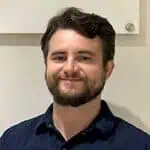
About the Author: As a Project Professional, Rafael Aberle coordinates and performs site assessment activities, including soil and groundwater sampling. Rafael works across SCS’s southeast regional offices and clients. Rafael’s expertise is in environmental assessments and environmental study projects for municipal and private clients. He also has extensive experience overseeing construction projects, including methane gas management systems. You can reach Rafael at SCS Engineers.
Additional Resources: Health & Safety Training
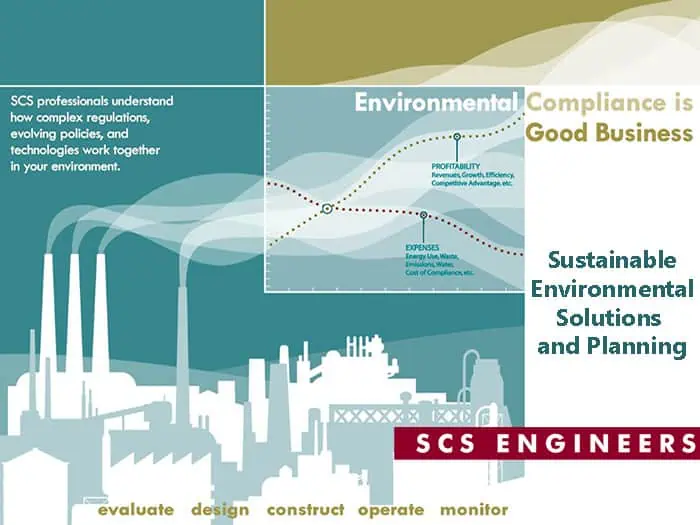
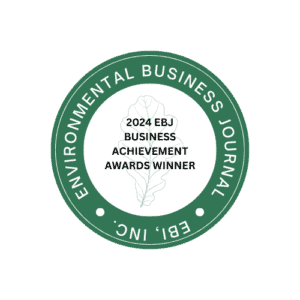 Each year EBI, Inc. and its award selection committee present Business Achievement Awards in a number of categories to worthy recipients in the environmental and climate change industries. EBI has two business achievement award programs: one for Environmental Business Journal® (EBJ) and one for Climate Change Business Journal® (CCBJ).
Each year EBI, Inc. and its award selection committee present Business Achievement Awards in a number of categories to worthy recipients in the environmental and climate change industries. EBI has two business achievement award programs: one for Environmental Business Journal® (EBJ) and one for Climate Change Business Journal® (CCBJ).
The EBJ Technology Merit Award goes to Melissa Russo and the team leading the SCS RMC Drones with GIS program. This RMC program provides landfills and solid waste operations across North America with the technologies to optimize operations and address major challenges. As presented at the U.S. EPA’s recent Landfill Technology Workshop, SCS RMC combines sensors with SCS drone-based technologies and GIS to monitor landfill gas (LFG) emissions and detect leaks, eliminating a significant portion of the manual effort from quarterly compliance while performing operations more safely and accurately. Captured emissions data is useful for optimizing well fields, tackling odor issues, and quantifying emissions for renewable natural gas projects. The secure application enables supervisory control and data acquisition (SCADA), data management, and can automate regulatory reporting needs. Aerial surface emissions monitoring collects real-time, accurate data, which is critical for operations to keep a wellfield balanced. Data collected can also visualize below-surface conditions for individual wells or well clusters in trouble areas; zoom in to inspect an individual well’s liquid levels, pump locations, surface, subsurface, and perforated piping; and detect which wells need servicing and their impact on emissions. Thermal imagery and a 360-degree camera inspect the structural integrity of landfill flare systems, and a combination of aerial and terrestrial LiDAR imagery creates Building Information Modeling, detailing the physical and functional characteristics of buildings and other assets.
The EBJ Project merit Award goes to SCS Engineers & Grow America for the Casa Ramona remediation work. Grow America and Casa Ramona won a $4.9-million Site-Specific Cleanup Grant. SCS Engineers led the grant application and is the environmental consultant implementing funded restoration efforts. Casa Ramona has served the San Bernardino, California, community for several decades as a community-based non-profit organization. Debris from fire and demolition had left lead and asbestos-containing materials on its proposed site for community services, including childcare and senior housing. With funding under the ECRG grant, SCS performed the priority cleanup activities: removal, packaging, and disposal of lead and asbestos materials and removal of possible asbestos-impacted soil following the South Coast Air Quality Management District Procedure 5. The community can reuse the site for crucial low-income senior housing and a community center. Congratulations to Cristobal Ramirez and his team.
The awards will be presented at the 2025 Environmental Industry Summit in April.
SCS Engineers welcomes Russell Wharton, PE, to SCS Engineers as our new Project Director in Nashville, Tennessee. Russ will run the office that serves the state and brings to diverse SCS clients over three decades of expertise in civil engineering design, municipal, environmental, and geotechnical engineering, architecture, alternative energy (including renewable natural gas), and consulting.
With his years of experience in civil and environmental engineering, Russ’s expertise includes construction management and quality assurance, saving clients time and money. His ability to incorporate LEED elements and sustainability procedures with minimal cost impacts brings more value when applying design elements in the field. These strategies help avoid cost overruns and project delays.
While having experience working on national accounts spanning from the West to East coasts, Russ’s work experience includes counties and cities throughout Tennessee, serving as the client contact and managing regulatory needs, including federal and state agencies and Authority Having Jurisdiction requirements for entitlements (rezoning, special use, variances, design review approvals), and permitting, including such clients as New York City, the Port Authority of NY and NJ, and various international airports.
His broad development design experience – facility siting, grading/drainage, utility (water, sewer, stormwater), pavement, erosion, and sediment control is especially helpful for many businesses and facilities facing stricter regulatory policies necessary to comply with Clean Water regulatory actions.
As a professional engineer and general contractor licensed in Tennessee, Russ earned a Vanderbilt B.E. in civil and environmental engineering. He is also an active member of Rotary International.
Please join SCS Engineers in congratulating our Chief Strategy Officer (CSO), Nathan Hamm, for his new position. As CSO, Hamm will lead SCS efforts for strategic planning, identification of short-and long-term growth objectives, and new business and expansion opportunities.
Hamm will coordinate and facilitate the optimization of the marketing and business development efforts across SCS to support strategic efforts. Further, he will lead the Client Success Program, which seeks to provide the highest value to our clients. As a professional engineer, Nathan Hamm has nearly three decades of experience and an ideal blend of client-focused consulting, business acumen, and hands-on work with our strategic initiatives to draw from.
Further, his previous experience as a Client Manager, Project Manager/Director, and the leader of our Leachate and Industrial Wastewater Treatment strategic initiative provides him with a broad perspective, key relationships, and strategic insight across SCS and the industries we serve. Hamm will oversee the program strategies that keep SCS’s deep bench of professionals poised to provide sustainable, full-service solutions.
SCS Engineers CEO Doug Doerr says, “Nathan Hamm’s background as part of SCS’s executive team, his work with our talented professionals, and his legacy of success with clients are key as SCS continues evolving to serve our core and expanding industry base.”
Additional Information:
SCS Engineers is excited to announce two new National Market Leaders for the firm in 2025 backing SCS’s ongoing commitment to growth. One SCS is how the firm works proactively as one team to leverage talent across the company, applying systems and processes locally that deliver the highest quality and value to clients.
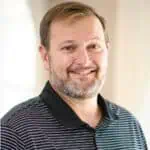
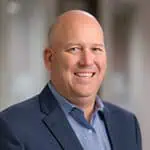
SCS’s employee-owners and clients are deeply grateful to Mike McLaughlin and Bob Gardner, who have been instrumental in guiding the firm to its current success. Their dedication and leadership have left an indelible mark on the organization, and we extend our heartfelt gratitude for their years of service.
Additional Information:
About SCS Engineers:
SCS Engineers’ consultants, scientists, engineers, and contractors provide expertise in designing and implementing solid and hazardous waste management, biogas, RNG, carbon capture – reduction, measurement, air quality, greenhouse gas verification solutions, and land recycling, each compliant with the most rigorous regulations and standards. Our award-winning teams work with industries, manufacturers, developers, and municipalities to prevent, mitigate, and remediate environmental challenges while applying our knowledge of environmental regulatory systems and technologies. SCS professionals work effectively to shorten project timelines, stay on budget, and close gaps between sustainability goals and achievements so our clients can produce and deliver products and services more efficiently.
The Association for Environmental Health and Soils (AEHS) is hosting the 40th Annual International (East Coast) Conference on Soils, Sediments, Water, and Energy in Amherst, Massachusetts from October 21 to 24, 2024. This AEHS conference integrates a variety of topics for the environmental science community and regulators. It offers an opportunity to stay updated on recent techniques and technologies for addressing environmental issues and solutions. SCS Engineers technical advisors and environmental professionals are attending the 2024 AEHS conference and are available to answer and discuss solutions for the covered topics.
PFAS
Per- and polyfluoroalkyl substances, called PFAS, is a major topic covered during the sessions. Three workshops and several presentation sessions are addressing various aspects of PFAS challenges. Sessions will cover an overview of methods and materials for field sampling activities and published sampling protocols, guidance, and procedures. They will also address various analytical methods for evaluating PFAS in drinking water, wastewater, solids, and biosolids, as well as the best practices for field collection and the available analytical methods and their applicability.
PFAS Treatment
Another significant topic will be PFAS treatment and remediation. One session covers an innovative approach combining foam fractionation with supercritical water oxidation to eliminate PFAS from various waste streams. Destructive technologies, including electrical discharge plasma treatment, thermal destruction, enhanced oxidation, and sonolysis, have shifted from the laboratory bench to the field. Therefore, one of the presentations will cover the various mechanisms used to destroy PFAS, compare early performance data to determine effectiveness and highlight successes and obstacles that may occur as these technologies move from pilot scale to full-scale implementation.
Metals Remediation and VOCs
Other topics include metals remediation, such as an in-situ chemical fixation process that co-precipitates arsenic via the formation of an iron-arsenic oxyhydroxide complex, and the remediation of lithium, molybdenum, boron, and arsenic at coal combustion residual sites. The investigation and remediation of chlorinated volatile organic compounds (cVOCs) will also be discussed in various sessions, covering the use of real-time 3-dimensional data visualization and analysis during a high-resolution site characterization, investigation using the membrane interface hydraulic profiling tool for the delineation of cVOCs and remediation using emulsified zero-valent iron for direct source mass destruction.
Regulations and Adapting Technologies for Emerging Contaminants
Other topics include bioremediation, vapor intrusion, statistics, sustainable remediation tools, climate change and resiliency, managing environmental data, in-situ remediation, and environmental security. The event dedicates one session to emerging environmental contaminants in drinking water, such as microplastics, nanomaterials, and PFAS. This session will also discuss the current status of United States regulations and provide a forecast of the potential trajectory of regulations and the corresponding legal landscape over the next one to two years.
AEHS also organizes a similar West Coast conference. The West Coast 34th Annual International Conference on Soil, Water, Energy, and Air Conference will be held March 17-20, 2025, in San Diego, California.
Additional Resources:
Statistics is the science of learning from data and using the results in many industries for various purposes. As environmental consultants, we use statistics primarily to help clients meet regulatory requirements because statistical analyses can provide valuable insights and guidance, potentially saving our clients’ money and time.
Various statistical methods can help streamline assessment and remediation concerning contaminated site cleanup, ultimately facilitating site closure. Statistical analysis can help to answer some important questions that arise throughout the life cycle of a project. The table below summarizes some common statistical questions, statistical methods, and data visualizations (statistical questions modified from ITRC, 2013*).
Statistics is one tool for solving client problems in combination with other methods. However, it is important to note that the output of a statistical analysis is only as good as the input, meaning that the collection of quality field samples and adherence to relevant standard operating procedures are crucial to the quality of statistical analysis.
In conclusion, while statistical analysis is a powerful tool for addressing client environmental issues, its effectiveness depends heavily on the accuracy of data collection and strict adherence to established protocols, ensuring reliable and meaningful results for our clients.
SCS has successfully implemented each of these methods on project sites. Future blogs will describe specific methodologies and processes with actual case studies useful for addressing the following,
Background Studies: after calculating the appropriate background level or establishing a background data set, that level or data set could support the removal of a particular contaminant from further consideration or serve as the remediation objective.
Groundwater trend analysis: to evaluate whether groundwater concentrations are increasing, decreasing, or stable/no trend, which could support the completion of long-term groundwater monitoring. This approach can also help estimate the time to attain cleanup goals.
Spatial Statistics: use several methods to evaluate spatial hot spots and outliers, groundwater plume stability, and groundwater concentration or elevation gradients, which can aid in evaluating areas of high concentrations requiring further evaluation.
*Interstate Technology & Regulatory Council (ITRC) Framework for Developing Quality ITRC Technical and Regulatory Guidance Documents, Revised December 2013
Additional Site Assessment and Remediation Resources:
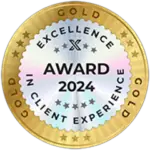
Reach Out Toll-Free +1 (800) 767-4727
Our receptionists answer calls between 8:30 am ET through 5:00 pm PT. We promptly answer voicemails and messages sent to our general email () 24/7.
Client Feedback Tool
SCS solicits feedback from clients during ongoing projects via short (2-3 minute) surveys using our electronic Client Feedback Tool (CFT). These surveys are designed to ensure we are on track to deliver project solutions to your satisfaction. Surveys are less than ten questions, and space is available for additional comments. Your Project Manager will work to establish a convenient schedule for you if you’d like to participate. This is not a marketing survey. It is a way to check in with you regularly to ensure your project is on track, in addition to regular communications with your Project Manager. Your participation is greatly appreciated.
Quality Management
SCS maintains a stringent, comprehensive Quality Management program. Quality Management ensures that SCS staff professionals, scientists, technologists, and field technicians, including administrators and subcontractors, have the necessary training, tools, and skills to employ sound, ethical processes on every environmental solution.
Our robust program includes apps built by SCS for our staff to continuously improve our services and communications. SCS staff have access to thousands of resources at the touch of a button, including libraries, compliance documents, safety information, training, and our National Experts and specialists nationwide to maintain the highest level of quality in our products and services. We make many of our resources available on our website, too.
The Website
SCS’s website is a rich resource for our clients and visitors. The site has two primary filters: one to find local staff with specific environmental experience. The second is a search filter that results after a search to help you target our resources, available on demand. Service descriptions, articles, whitepapers, blogs, events, and videos can be resources. Each page enables you to print or share the resource privately with others or on social media.
Free Environmental Educational Videos
The SCS Engineers Learning Center contains recorded open forums where participants ask questions throughout. The video recordings are available in our Learning Center to watch at your convenience. These are educational videos, not sales pitches, as we share our experience and expertise in environmental fields with individuals and businesses to enhance a clearer understanding of modern environmental solutions and technologies available.
On September 16th, the U.S. Environmental Protection Agency (EPA) announced $117 million for three separate funding opportunities to advance recycling infrastructure and boost food waste prevention education across the country. Two of the notices are for Solid Waste Infrastructure for Recycling grants – one funding opportunity for Tribes and intertribal consortia and another for communities (such as cities, counties, and parishes) across the country. The third notice is for EPA’s Recycling Education and Outreach grant program and is focused on food waste prevention and composting. All three opportunities provide the largest EPA investment in recycling in more than 30 years.
Communities in Need
Some communities that lack waste management infrastructure do not have curbside waste collection services, recycling, or composting programs, which increases the strain on local waste management systems and increases greenhouse gas emissions. In addition, mismanaged waste contributes to health and economic issues in historically underserved and overburdened communities. Increasing recycling reduces climate, environmental, and social impacts of materials use and keeps valuable resources in use instead of in landfills. Preventing wasted food from ending up in landfills plays an important role in reducing greenhouse gas emissions.
Working Toward a National Strategy
The grant opportunities aim to improve waste management systems and consumer education and outreach on waste prevention and recycling, meeting U.S. goals to create a stronger, more resilient, and cost-effective U.S. recycling system. These funding opportunities also put the concrete steps identified in the “National Strategy for Reducing Food Loss and Waste and Recycling Organics” into action.
Recycling Education and Outreach Grant Funding Programs aim to increase recycling through composting, less wasted food from households, markets for selling compost, and lower contamination in the compost stream. Projects funded through the Solid Waste Infrastructure for Recycling and Recycling Education and Outreach grants will improve post-consumer materials management and infrastructure using the basis of sustainability and a circular economy.
Additional Resources:
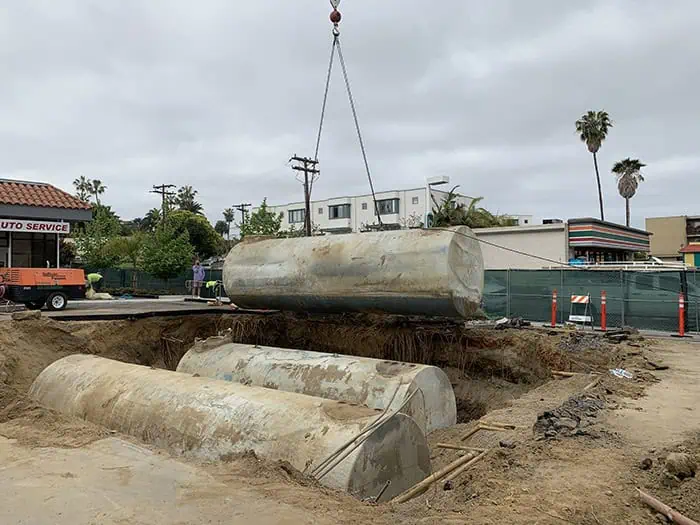
The California State Water Resource Control Board ordered the closure of single-walled underground storage tank systems and single-walled product piping at all facilities. The deadline to remove all single-walled underground storage tanks and single-walled piping is December 31, 2025.
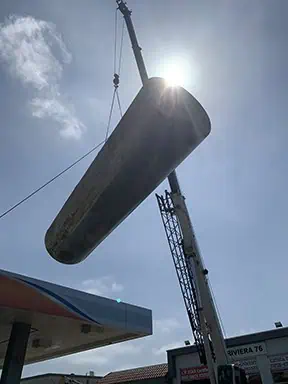
Underground storage tanks recognized as out of compliance will be subject to enforcement actions beginning January 1, 2026.
Grants and loans may be available to eligible small business owners who want to remove, replace, or upgrade USTs.
The professionals at SCS Engineers are ready to assist with closing and removing underground storage tanks. SCS Engineers provides turnkey services, including licensed tank removal contractors, consulting services for agency compliance, and California-certified analytical testing laboratories.
SCS’s National UST Practice Covers:
Contact a UST professional at SCS Engineers today at ; for service in California, click here.
For information on the EPA Federal program, click here.
Additional California Code Information:
Health and Safety Code – HSC
DIVISION 20. MISCELLANEOUS HEALTH AND SAFETY PROVISIONS [24000 – 26275] ( Division 20 enacted by Stats. 1939, Ch. 60. )
CHAPTER 6.7. Underground Storage of Hazardous Substances [25280 – 25299.8] ( Chapter 6.7 added by Stats. 1983, Ch. 1046, Sec. 3. )
25292.05.
(a) On or before December 31, 2025, the owner or operator of an underground storage tank shall permanently close that underground storage tank in accordance with Section 25298 and the regulations adopted pursuant to that section, if the underground storage tank meets either of the following conditions:
(1) The underground storage tank is designed and constructed in accordance with paragraph (7) of subdivision (a) of Section 25291 and does not meet the requirements of paragraphs (1) to (6), inclusive, of subdivision (a) of Section 25291.
(2) The underground storage tank was installed on or before January 1, 1984, and does not meet the requirements of paragraphs (1) to (6), inclusive, of subdivision (a) of Section 25291.
(b) Notwithstanding subdivision (a), the board may adopt regulations to require the owner or operator of an underground storage tank to permanently close that underground storage tank before December 31, 2025, in accordance with Section 25298 and the regulations adopted pursuant to that section, if the underground storage tank meets the conditions specified in either paragraph (1) or (2) of subdivision (a) and the underground storage tank poses a high threat to water quality or public health. The board shall consult with stakeholders before adopting regulations pursuant to this subdivision.
(Added by Stats. 2014, Ch. 547, Sec. 1. (SB 445) Effective September 25, 2014.)